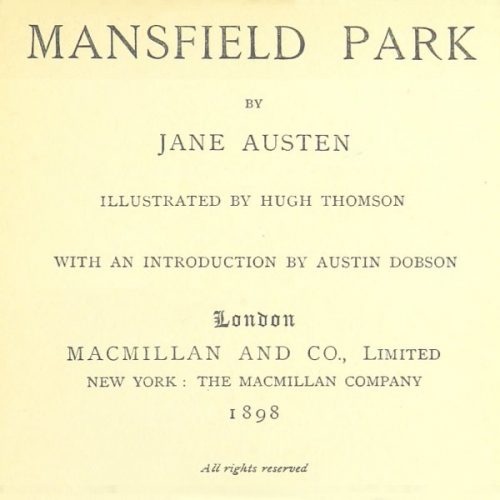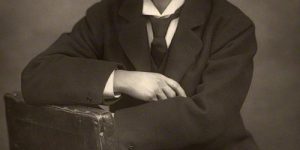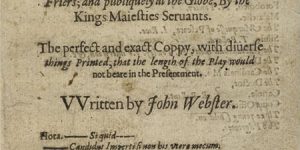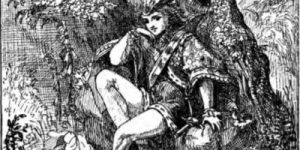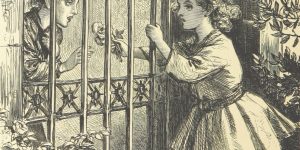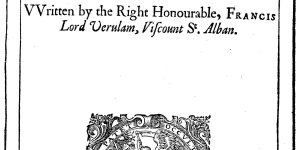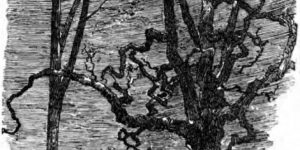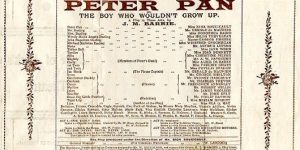Mansfield Park Introduction by Austin Dobson
Mansfield Park Introduction by Austin Dobson
‘Oh, Mr. Bickerstaff,’ says the delightfully fatuous Tom Folio of the Tatler, ‘what would a man give to see one simile of Virgil writ in his own hand!’ What, indeed! one may reply. But the sentiment expressed is by no means the most foolish aspiration of Addison’s fantastic ‘broker in learning.’ To the genuine and reverent lover of letters, as opposed to the mere cackler and virtuoso, there is an exceptional attraction in the manuscript of a work which has taken rank as a classic, and has therefore attained to that eminence of reputation in which everything connected with its production becomes of interest. There lies before us at this moment a facsimile of Dickens’s Christmas Carol—’my own, and only MS. of the Book,’ it is styled—and you may follow step by step his first thoughts, his second thoughts, his final decisions, until, with endless circumvolutions of correction, he arrives at that terminal, ‘And so, as Tiny Tim observed, God Bless us every one!’ which puts the finishing touch to his task—a task, as we know from his biographers, prolonged through several weeks, and broken only by long nocturnal walks. At South Kensington you may see a sequence of the original MSS. of the novels from the first free and flowing script of Oliver Twist to the last laboured and slow-moving paragraphs of Edwin Drood, and you may trace, if you will, the gradual signs which show how, as the creative power grew feebler, the effort was increased. We have no such memorials of the author of Mansfield Park. A few lines of facsimile in her nephew’s Life serve to exemplify ‘her clear, strong handwriting’; but though specimens of her manuscript must exist—of Lady Susan, for instance—they have never, as far as we are aware, been submitted for public inspection. It would be of considerable interest to learn whether she wrote readily or laboriously; whether she corrected greatly; whether, in short, those finished little epigrams of hers—to quote her own description of Mr. Collins’s compliments—’proceeded from the impulse of the moment, or were the result of previous study.’ For ourselves, we are disposed to surmise that her work was, as the French say, ‘coulé d’un jet,‘ that her sentences had taken precise and definite shape in her head before she set them down, and that her final word was not—like Victor Hugo’s, for instance—only the apex of a pyramid of discarded epithets. But her autographs seldom come into the market, and there are none in the British Museum. There is a fragment of a note to her niece in the Locker-Lampson collection at Rowfant, and a long letter to her sister, invitingly described as treating of her writings, was sold last year at Sotheby’s.
Something of the story of Mansfield Park has, of necessity, been included in the introductions to those of Miss Austen’s books which have preceded the present volume. As will be remembered, it belongs to, and begins, the second group of her novels. The first three of these had been written or sketched before she left Steventon in 1801, when she was twenty-six; the last three belong to the period of her residence at Chawton Cottage, in Hampshire, which commenced in 1809, when she was four-and-thirty. In the interval she had written nothing but the fragment reprinted in 1871 under the title of The Watsons. Whether, as we have already said,[1] this long intermission of literary activity—which is really longer than it looks, for she had practically ceased writing for three years before she left Steventon—must be attributed to obstacles in the way of publication, or to the fact that her parents claimed a larger share of her attention, is not now discoverable; but it may be repeated that, during all this fallow time, her powers of observation must have been maturing, her experience increasing in scope and variety, and her criticism of life becoming finer and more exact in quality. That there is much appreciable difference in her style there are good reasons for denying, one of the foremost being that, of her first written books, two were certainly revised at Chawton. But both in Mansfield Park and Emma there is unmistakable evidence of a closer grasp of the plot and a greater attention to its artistic evolution. After Sense and Sensibility was off her hands in 1811, and Pride and Prejudice had followed in 1813, she seems to have proceeded actively with Mansfield Park, which she had commenced in 1812. By the beginning of March 1814 it had apparently been completed, for her brother Henry is reading it approvingly (presumably in manuscript) on a posting journey which she takes with him to London, perhaps in order to arrange for its publication. ‘Henry’s approbation,’ she tells her sister Cassandra at this time, ‘is hitherto even equal to my wishes. He says it [Mansfield Park] is different from the other two [novels]; but does not appear to think it at all inferior. He has only married Mrs. R[ushworth]. I am afraid he has gone through the most entertaining part. He took to Lady B[ertram] and Mrs. N[orris] most kindly, and gives great praise to the drawing of the characters. He understands them all, likes Fanny, and, I think, foresees how it will all be.’ This quotation is from a letter which is added to the second edition of Mr. Austen-Leigh’s Memoir. Another, which must have immediately followed it, is given by Lord Brabourne, and from this we get the brother’s progressing verdict. ‘Henry has this moment said that he likes my M[ansfield] P[ark] better and better; he is in the third volume. I believe now he has changed his mind as to foreseeing the end; he said yesterday, at least, that he defied anybody to say whether H[enry] C[rawford] would be reformed or would forget Fanny in a fortnight.’ Finally, on 9th March, comes: ‘Henry has finished Mansfield Park, and his approbation has not lessened. He found the last half of the last volume extremely interesting.’ These quotations, in which the last italics are Miss Austen’s own, are notable for two reasons, neither of which concerns the literary value of the fraternal judgment. One is that her references to her works are of the briefest and most casual character; the other that, whatever the worth of the opinion reproduced, it constitutes the criticism upon which she still mainly relied to gauge the measure of her success. In the next letter, printed by Lord Brabourne, which is dated 13th June, it would seem that the book had then been printed, and, as a matter of fact, it is duly advertised among the Quarterly’s ‘List of New Publications’ for July, making joint appearance with Madame D’Arblay’s now forgotten novel of The Wanderer and the Rosanne of Miss Lætitia Matilda Hawkins. The publisher of Mansfield Park was the same Mr. Egerton who had issued its two predecessors, and by the middle of November the first edition was all sold. Whether a second edition was to be ‘hazarded’ was, however, still matter of debate. ‘People,’ she says in her modest way, ‘are more ready to borrow and praise than to buy, which I cannot wonder at; but, though I like praise as well as anybody, I like what Edward calls “Pewter” too.’ Eventually, towards the close of the following year, a second edition was arranged for, and it was advertised concurrently with the new novel of Emma. By this time, however, Miss Austen had changed her publisher. ‘I return,’ she writes to Mr. John Murray in December 1815, à propos of Emma, ‘also Mansfield Park, as ready for a second edition, I believe, as I can make it.’ A later letter to the same gentleman inserted in the second edition of Mr. Austen-Leigh’s Memoir and dated 1st April 1816, includes a little reference which should properly have had its place in the Introduction to Emma, as it supplies the sequel of that dedication to the Prince Regent, of which, according to His Royal Highness’s librarian, Mr. Clarke, the merits of Mansfield Park were the proximate cause. The First Gentleman in Europe does not seem to have particularly distinguished himself by the manner of his acknowledgment of the honour he had invited. He caused the author to be thanked for the ‘handsome copy’ she had sent him of Emma, a neglect of the text which leads her to observe to her correspondent, ‘with the least little touch of spleen,’ that whatever His Royal Highness might think of her share in the work, that of Mr. Murray had manifestly been approved.
Henry Austen was not the only person who did not think Mansfield Park‘ at all inferior,’ in spite of the fact that the Quarterly reviewer for October 1815—as already narrated in the Introduction to Emma—refrained from mentioning it in any way.[2] Indeed, like all Miss Austen’s other books, it has its party of preference, and Professor Goldwin Smith tells a story which should make that party even stronger. It is of a group of literary men at a country house, who, being required to write down the name of the novel which had given them the greatest pleasure, were found to have given no fewer than seven votes to Mansfield Park. The incident would gain in impressiveness if we were also informed how soon it occurred after the publication of the book, and how many voters there were on the occasion; but in any case the percentage must be abnormal. It is also recorded that Fanny Price was a prime favourite with Sydney Smith, a circumstance which should always count greatly in her favour. It is possible, however, that the modern reader, who has seen many descendants of this young lady, may not be equally impressed. She is certainly drawn with great care and insight. But she is neither as brilliant as Eliza Bennet nor as animated as Emma Woodhouse, and it is difficult not to suspect that she is rather the result of a preconception—a fixed intention to create a model character of a certain type, than a study from the life. The same may be said of Edmund Bertram. He is evidently meant to be a gentleman and a better clergyman than Mr. Collins or Mr. Elton or Dr. Grant. But like Fanny Price he also seems to have been drawn less objectively than subjectively; and both he and Miss Price, when they reflect and moralise, tremble sometimes on the verge of what has been styled ‘the discovery of the obvious.’ On the other hand, Henry Crawford and his sister are admirable. One sees and recognises them to be real personages. None of the rest come up to these four, though William Price is a pleasant sketch—it may be, an Austen family portrait. Sir Thomas and Lady Bertram play secondary parts appropriately, and the two handsome Miss Bertrams are good flesh-and-blood examples of the education of the head at the expense of the heart—by which we mean something more than that merely physical organ which plays so palpitating a part in the famous Frederick-cum-Agatha scene of Lovers’ Vows. Mr. Rushworth, with his forty-two speeches, and his mother, with her housekeeper patter, are subordinate figures and therefore slightly drawn. But the Collins and Bates and Jennings gallery is admirably reinforced by Mrs. Norris. She is not an amiable character, nor is she intended to be. But whether she is arranging to provide for Fanny at her brother-in-law’s expense; or cajoling the housekeeper at Sotherton out of the pheasant’s eggs which, having been hatched under somebody’s hen, are to be reared in somebody else’s coop; or spiriting away the famous green baize curtain which was to have hung in such graceful festoons—she is uniformly diverting. Her absences from the stage leave it blanker, and her reappearances are hailed with delight.
A word may be added with respect to the play which, upon two occasions in this book, never got beyond a rehearsal. As far as we can remember, Miss Austen does not name the author of Lovers’ Vows. It was a translation, duly altered to suit British susceptibilities, from Das Kind der Liebe of Kotzebue, better known in this day as the author of that once popular Stranger in which Mrs. Haller (Miss Emily Fotheringay) captivated Mr. Arthur Pendennis, or of that other almost equally admired tragedy described by Miss Fotheringay’s father as Pezawro. There were several English versions of Das Kind der Liebe,[3] but the only one acted was Mrs. Inchbald’s, which had a considerable vogue at Covent Garden in 1798. This was some years after those private theatricals at Steventon Parsonage, of which the memories no doubt survive in Mansfield Park; but Miss Austen, besides being an assiduous playgoer when in London, was well posted in the drama of that Kean and Kemble age. Of literary allusion there is more in Mansfield Park than usual, for not only are Scott and Cowper quoted, but Henry Crawford talks sententiously of Shakespeare with Edmund Bertram, and Mary Crawford makes unexpected adaptation from that rather recondite parodist, Isaac Hawkins Browne. In an early chapter there is a reference which reminds us that although it was no longer possible, as in the last century, to send a cow or a housemaid by free post, the old-fashioned abuse of franking was still in full vigour, and mention is made elsewhere of that other reprehensible practice of hiding money under a seal which is described in Trevelyan’s Life of Macaulay. ‘Macaulay wrote to me at Harrow pretty constantly,’ says the biographer, ‘sealing his letters with an amorphous mass of red wax, which, in defiance of post-office regulations, not unfrequently concealed a piece of gold.’ This is precisely how Edmund Bertram conveys half a guinea to William Price.
[1] Introduction to Pride and Prejudice (Macmillan’s Illustrated Standard Novels), 1895, xv.
[2] At the beginning of the Introduction to Emma mention was made of the fact that, although Emma was published in December 1815, it had been reviewed in the number of the Quarterly for the preceding October; and it was suggested that this review must have been written from the proofs or the MS. Miss Austen’s letter to Mr. Murray of 1st April 1816, which is quoted above, imported a new difficulty into the question, since, besides referring to the Prince Regent, it thanked Mr. Murray for the review in the Quarterly, and went on: ‘The Authoress of Emma has no reason, I think, to complain of her treatment in it, except in the total omission of Mansfield Park. I cannot but be sorry that so clever a man as the reviewer ofEmma should consider it as unworthy of being noticed.’ This passage makes it plain that, on 1st April 1816, Miss Austen had only very recently been made aware of the existence of the review of October 1815. In these perplexing circumstances the present writer sought counsel of the publisher of the Quarterly, Mr. John Murray, whose ready courtesy and well-arranged records at once supplied the key to the mystery. Owing to exceptional delays, the Quarterly for October 1815 was not actually issued to the public until the March of the year following—that is to say, about three months after instead of before the appearance of Emma. Mr. Murray further stated that the article referred to was written by Walter Scott.
[3] This has been translated The Child of Love. An exacter English equivalent would be that title of ‘Love-child,’ by which—in the Old Curiosity Shop—Mr. Sampson Brass describes and defines the Marchioness.


